Refine search
Actions for selected content:
2584 results in Computational Science
Efficient implementation of the Hardy–Ramanujan–Rademacher formula
- Part of
-
- Journal:
- LMS Journal of Computation and Mathematics / Volume 15 / May 2012
- Published online by Cambridge University Press:
- 01 October 2012, pp. 341-359
-
- Article
-
- You have access
- Export citation
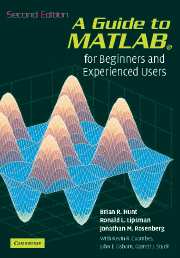
A Guide to MATLAB
- For Beginners and Experienced Users
-
- Published online:
- 05 September 2012
- Print publication:
- 08 June 2006
Identifying supersingular elliptic curves
- Part of
-
- Journal:
- LMS Journal of Computation and Mathematics / Volume 15 / May 2012
- Published online by Cambridge University Press:
- 01 September 2012, pp. 317-325
-
- Article
-
- You have access
- Export citation
On the use of expansion series for stream ciphers
- Part of
-
- Journal:
- LMS Journal of Computation and Mathematics / Volume 15 / May 2012
- Published online by Cambridge University Press:
- 01 September 2012, pp. 326-340
-
- Article
-
- You have access
- Export citation
Galois groups of chromatic polynomials
- Part of
-
- Journal:
- LMS Journal of Computation and Mathematics / Volume 15 / May 2012
- Published online by Cambridge University Press:
- 01 September 2012, pp. 281-307
-
- Article
-
- You have access
- Export citation
Complete addition laws on abelian varieties
- Part of
-
- Journal:
- LMS Journal of Computation and Mathematics / Volume 15 / May 2012
- Published online by Cambridge University Press:
- 01 September 2012, pp. 308-316
-
- Article
-
- You have access
- Export citation
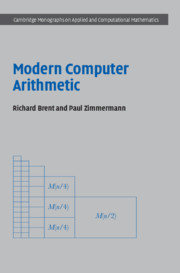
Modern Computer Arithmetic
-
- Published online:
- 05 August 2012
- Print publication:
- 25 November 2010
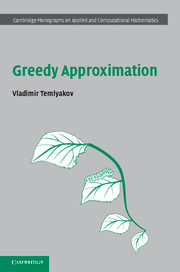
Greedy Approximation
-
- Published online:
- 05 August 2012
- Print publication:
- 08 September 2011
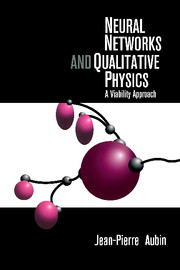
Neural Networks and Qualitative Physics
- A Viability Approach
-
- Published online:
- 05 August 2012
- Print publication:
- 29 March 1996
Accelerating the CM method
- Part of
-
- Journal:
- LMS Journal of Computation and Mathematics / Volume 15 / May 2012
- Published online by Cambridge University Press:
- 01 August 2012, pp. 172-204
-
- Article
-
- You have access
- Export citation
Computing Hall subgroups of finite groups
- Part of
-
- Journal:
- LMS Journal of Computation and Mathematics / Volume 15 / May 2012
- Published online by Cambridge University Press:
- 01 August 2012, pp. 205-218
-
- Article
-
- You have access
- Export citation
The Brauer characters of the sporadic simple Harada–Norton group and its automorphism group in characteristics 2 and 3
- Part of
-
- Journal:
- LMS Journal of Computation and Mathematics / Volume 15 / May 2012
- Published online by Cambridge University Press:
- 01 August 2012, pp. 257-280
-
- Article
-
- You have access
- Export citation
Zariski chambers on surfaces of high Picard number
- Part of
-
- Journal:
- LMS Journal of Computation and Mathematics / Volume 15 / May 2012
- Published online by Cambridge University Press:
- 01 August 2012, pp. 219-230
-
- Article
-
- You have access
- Export citation
PyCox: computing with (finite) Coxeter groups and Iwahori–Hecke algebras
- Part of
-
- Journal:
- LMS Journal of Computation and Mathematics / Volume 15 / May 2012
- Published online by Cambridge University Press:
- 01 August 2012, pp. 231-256
-
- Article
-
- You have access
- Export citation
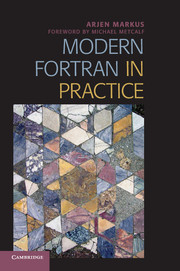
Modern Fortran in Practice
-
- Published online:
- 05 July 2012
- Print publication:
- 18 June 2012
Bibliography
-
- Book:
- Modern Fortran in Practice
- Published online:
- 05 July 2012
- Print publication:
- 18 June 2012, pp 245-250
-
- Chapter
- Export citation
Preface
-
-
- Book:
- Modern Fortran in Practice
- Published online:
- 05 July 2012
- Print publication:
- 18 June 2012, pp xv-xvi
-
- Chapter
- Export citation
7 - Graphics, GUIs, and the Internet
-
- Book:
- Modern Fortran in Practice
- Published online:
- 05 July 2012
- Print publication:
- 18 June 2012, pp 92-113
-
- Chapter
- Export citation
10 - Robust Implementation of Several Simple Algorithms
-
- Book:
- Modern Fortran in Practice
- Published online:
- 05 July 2012
- Print publication:
- 18 June 2012, pp 135-162
-
- Chapter
- Export citation
6 - Interfacing to C: SQLite As an Example
-
- Book:
- Modern Fortran in Practice
- Published online:
- 05 July 2012
- Print publication:
- 18 June 2012, pp 76-91
-
- Chapter
- Export citation
